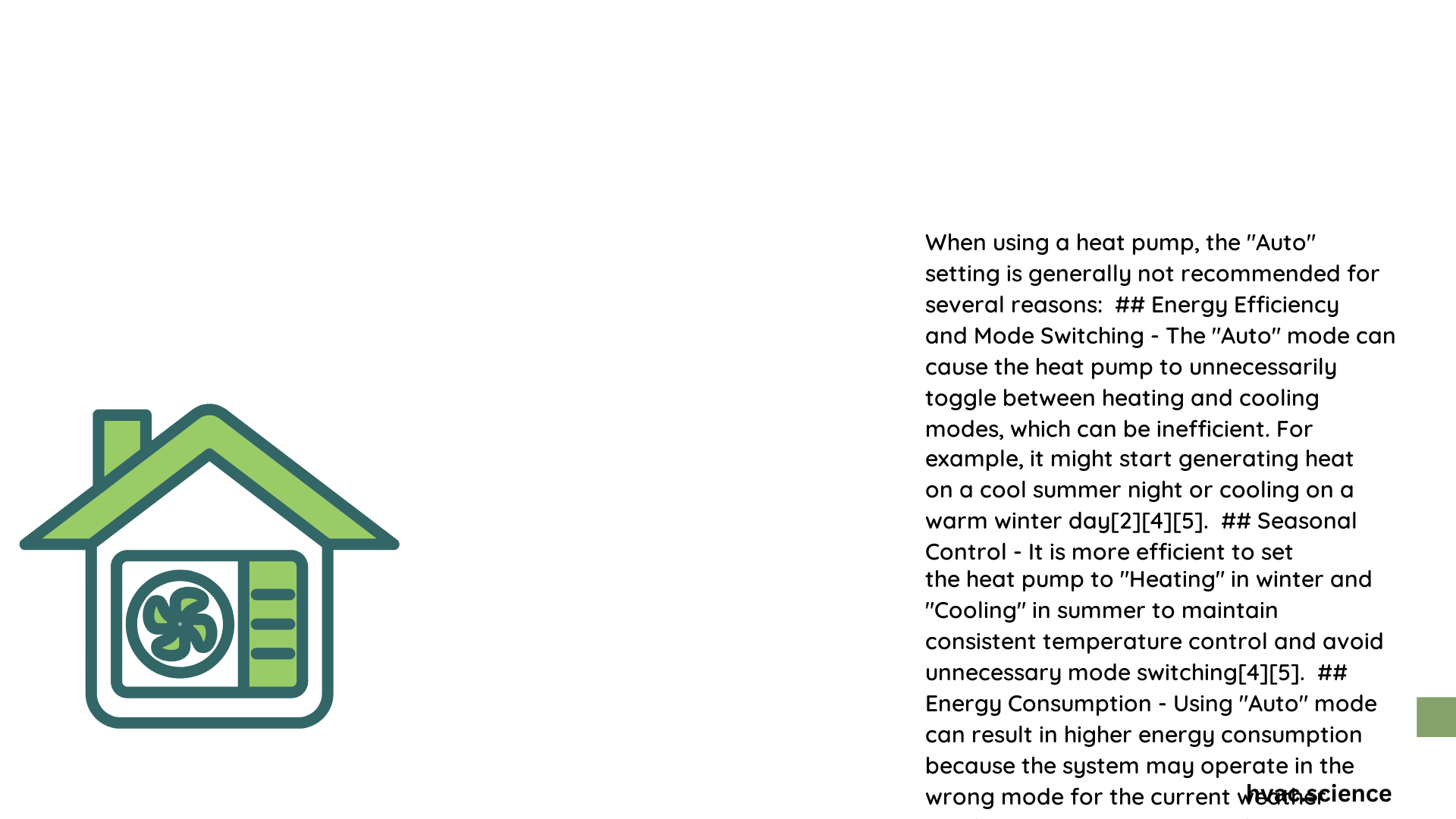Heat pump auto settings can be a complex feature that often leads to confusion among homeowners. While seemingly convenient, the auto mode may actually compromise system efficiency by unnecessarily switching between heating and cooling modes. Understanding the nuanced operation of heat pumps and strategically selecting the right mode can significantly improve performance, reduce energy consumption, and extend the lifespan of your HVAC system.
What Makes Heat Pump Auto Setting Problematic?
Heat pump auto settings can create inefficiencies by:
- Randomly switching between heating and cooling modes
- Consuming more energy than targeted mode selections
- Causing unnecessary system strain
- Reducing overall equipment performance
How Do Temperature Ranges Impact Heat Pump Performance?
| Temperature Range | Recommended Mode | Energy Efficiency |
|---|---|---|
| Below 60°F | Heat Mode | High |
| Above 75°F | Cool Mode | High |
| 60-75°F | Fan/Dry Mode | Maximum |
Why Should Homeowners Avoid Auto Mode?
Homeowners should avoid auto mode primarily because:
- Unnecessary Mode Transitions: The system frequently switches between heating and cooling
- Energy Waste: Constant mode changes increase electricity consumption
- System Wear: Frequent transitions stress mechanical components
- Inconsistent Comfort: Temperature fluctuations reduce home comfort
Strategic Heat Pump Mode Selection

When to Use Specific Modes?
- Winter (Below 60°F):
- Use “Heat” mode exclusively
- Maintain indoor temperatures between 68-72°F
-
Lower temperature to 62-66°F during nighttime
-
Summer (Above 75°F):
- Use “Cool” mode
- Maintain indoor temperatures around 72-76°F
- Utilize fan or dry modes for mild days
How Can Homeowners Optimize Heat Pump Settings?
Optimization strategies include:
- Install a programmable thermostat
- Set consistent temperature ranges
- Avoid frequent manual adjustments
- Clean filters regularly
- Schedule professional maintenance annually
Technical Considerations for Heat Pump Efficiency
What Energy Ratings Matter?
Key efficiency metrics include:
– SEER (Seasonal Energy Efficiency Ratio): 14-25 range
– HSPF (Heating Seasonal Performance Factor): 8-12 range
Maintenance Tips for Peak Performance
- Clean air filters monthly
- Keep outdoor unit clear of debris
- Check refrigerant levels annually
- Inspect electrical connections
- Lubricate moving parts
Advanced Recommendations
Professional HVAC technicians recommend:
– Treating heat pumps differently from traditional HVAC systems
– Understanding local climate variations
– Investing in high-efficiency models
– Using supplemental heating for extreme temperatures
Cost and Energy Savings Potential
By avoiding auto mode and implementing strategic settings, homeowners can:
– Reduce energy consumption by 10-30%
– Lower monthly utility bills
– Extend equipment lifespan
– Maintain consistent home comfort
Conclusion
While heat pump auto settings might seem convenient, they often compromise system efficiency. Strategic, manual mode selection remains the most effective approach for optimal performance and energy management.
